Strutting around with their large, iridescent feathers, peacocks are one of the most beautiful and graceful birds in the world for sure. And while their massive plumage makes it seem improbable, they can actually fly.
People typically use the term “peacock” in place of peafowl. However, a peacock is, more accurately, a male peafowl, while a peahen is a female peafowl.
Peafowls belong to the Pavoninae subfamily of the pheasant family. They come in three species, which branch into 225 varieties, and they are one of the largest flying birds.
Below, we discuss the types of peacocks. We talk about the three peafowl species and their peculiar features. Then we look into some varieties of these three species. So, read on for some fascinating details about this group of graceful birds.
Table of Contents
Types of Peacocks – The 3 Species of Peafowls
1. Congo Peafowl
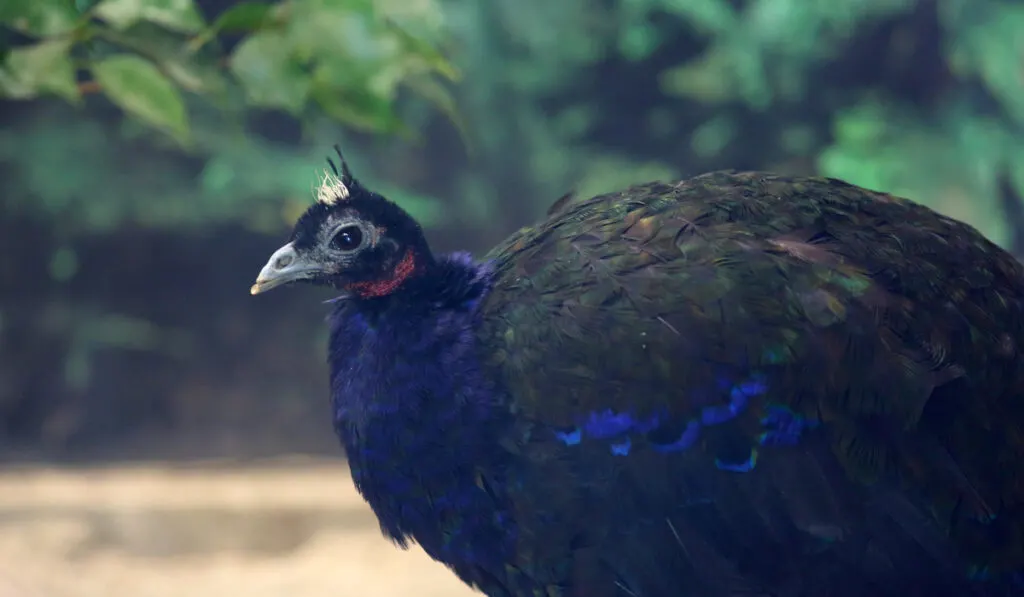
As the name implies, the Congo peafowl is a peafowl species of African descent. It is the only peafowl species native to Africa and the most recently discovered of all three species of peafowl.
Congo peafowls have a more pheasant-like look than Green peafowls and Indian peafowls. They are also not as flashy.
Unlike those two species, the Congo peafowl does not have colorful, elongated trains.
While not as flashy as the typical peacock, Congo peafowls still have beautiful plumage. Congo peacocks come with beautiful blue feathers on their upper bodies and wings that have a lovely emerald green sheen.
Congo peahens look quite like young Indian peafowls or Green peafowls. They come with plumage of mottled green and brown.
Having no long trains like their counterparts, Congo peacocks are relatively smaller than Indian and Green peacocks.
You will find Congo peafowls in lowland rainforests, where they primarily feed on plants, fruits, and seeds. Unfortunately, the species currently has an endangered status.
There is still a lot to learn about Congo peafowls. Fortunately, the Association of Zoos and Aquariums has a project to preserve the habitat and populations of Congo peafowls.
2. Green Peafowl
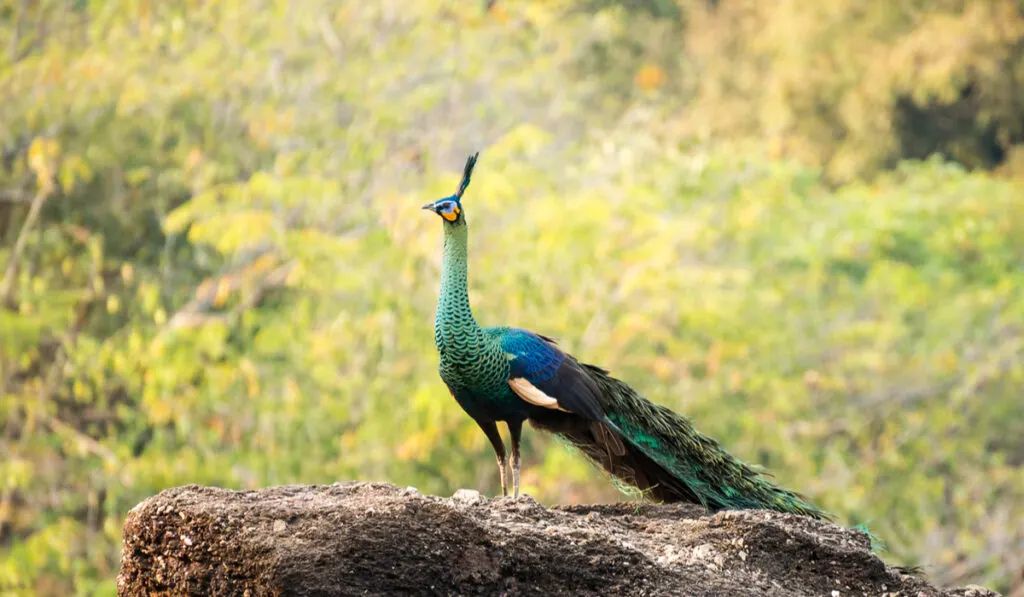
The Green peafowl also goes by the name Javanese peafowl. It is native to Java Island, Indonesia (Southeast Asia). The Green peacock shares many similarities with the Indian peacock. For one, both peacock species have a long train of brightly colored feathers, unlike the Congo peacocks.
Besides having drawn-out feather trains, Green peacocks and Indian peacocks both use their feather trains to attract peahens.
Indian peacocks and Javanese peacocks both have crests on their heads. However, while the Indian peacocks have blue heads and blue crests, the Green peacocks have green heads and green crests. Hence, the name “green.”
Like Green peacocks, Green peahens have a bright green color that is only a tad less bright than the peacocks. Since they share similar plumage colors, Green peahens and peacocks look alike.
In fact, the similarity in their appearance is even stronger in the wild. But then, since peahens do not have a train of tail feathers, you can still readily tell them apart.
Of all species of peafowls, the Javanese peafowls are the largest. But even though they’re large, they can fly over extended distances. Since Green peafowls are the largest peafowls, it is not surprising that their tail feathers are longer than those of Indian peafowls.
Besides being the biggest, Green peafowls are the quietest peafowl species. Unfortunately, they are currently listed as being endangered due to habitat loss.
3. Indian Peafowl
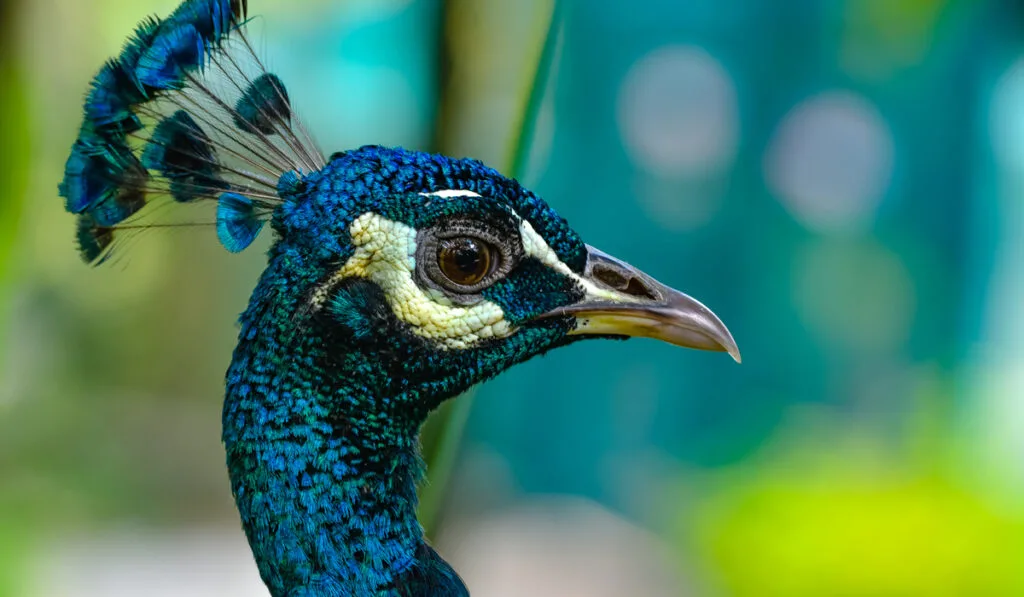
The Indian peafowl is perhaps the most well-known peafowl species. You will commonly find it in Sri Lanka and India. However, you can also come across the Indian peafowl in other east Asian areas.
As we mentioned before, Indian peacocks have colorful feather trains, which they use in courting rituals. They also have crests shaped like Japanese hand fans atop their heads.
Indian peacocks are pretty similar to Green peacocks in appearance. However, while Green peacocks have green heads and crests, Indian peacocks have blue crests and heads.
Indian peahens do not have feather trains like the males. Their plumage also has colors different from those of the peacocks.
Indian peahens have brownish plumage, but their heads may be blue or green. This color combination makes them look somewhat like a larger-sized version of the Congo peahen.
9 Peafowl Variations
1. Black Shouldered Peafowl
The Black Shouldered peafowl is a variation of the Indian peafowl. It differs from the typical Indian peafowl in shoulder feather color.
While Indian peacocks have bluish shoulders, Black Shouldered peacocks have black shoulders with a bluish/greenish luster.
Indian peahens also differ from Black Shouldered peahens in the same way. While Indian peahens are dark brown with a green shimmer, Black Shouldered peahens are cream with a green gloss.
The cream color of Black Shouldered peahens could be any shade of cream – from dark to light.
2. Cameo Peafowl
Cameo peafowls are also a variation of the Indian peafowl. They differ from the regular Indian peafowl in plumage color.
Cameo peahens have light brown plumage with a dark rust-like gloss on their neck. Their feathers are noticeably lighter than those of regular Indian peahens.
The plumage of Cameo peacocks, on the other hand, is primarily creamy brown. But their ocelli (eye-like color spots in their tails) and neck are a darker shade of brown.
The Cameo peafowl is a sex-specific mutation of the Indian peafowl. So, unsurprisingly, there are fewer Cameo peacocks than peahens.
3. India Blue Pied
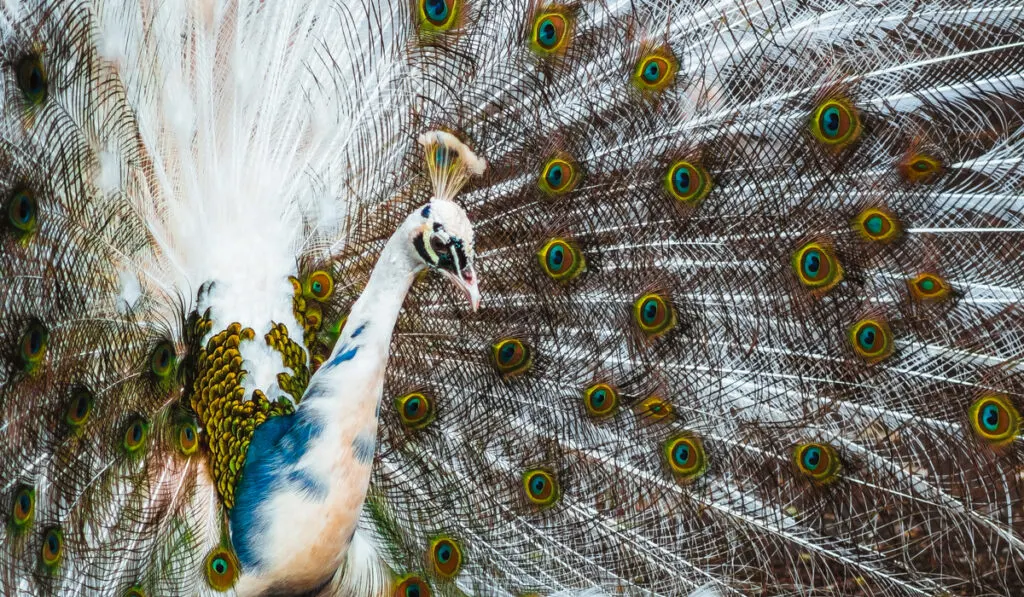
The India Blue Pied peafowl is pretty much like the typical Indian peafowl. However, India Blue Pied peafowls have white blotches in various parts of their plumage that Indian peafowls don’t.
4. Opal Peafowl
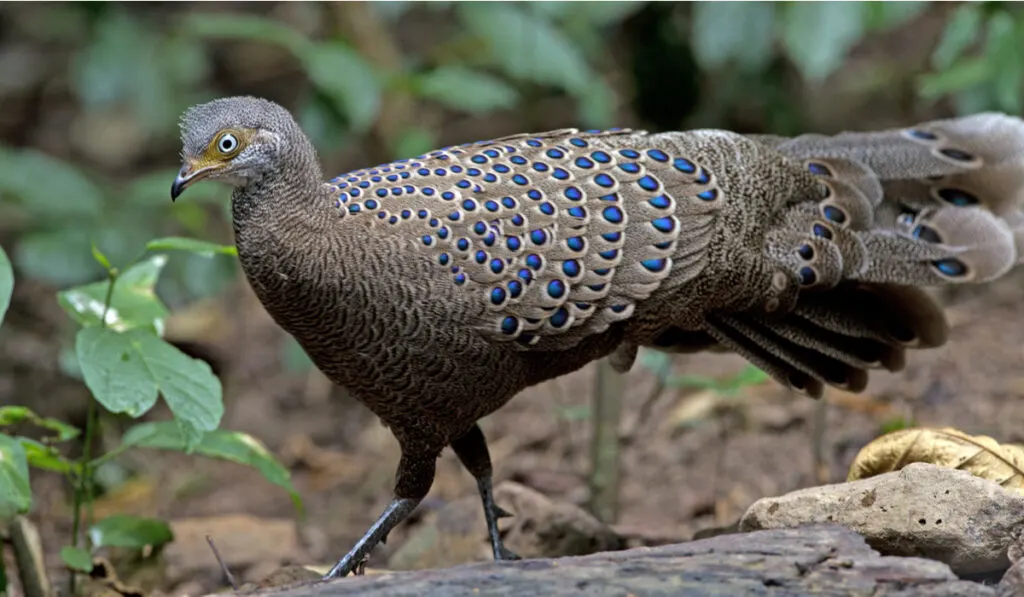
Unlike Indian peahens, Cameo peahens, and Purple peahens, Opal peahens are a light grayish color. They also have no shimmery feathers in their plumage, unlike those three.
Like the peahens, Opal peacocks have grey plumage. However, their necks are dark gray with a sheen reminiscent of opal gemstones. Their wings are relatively lighter and barred.
The ocelli of Opal peacocks can be copper, opal-colored, or black.
5. Peach Pied Peafowl
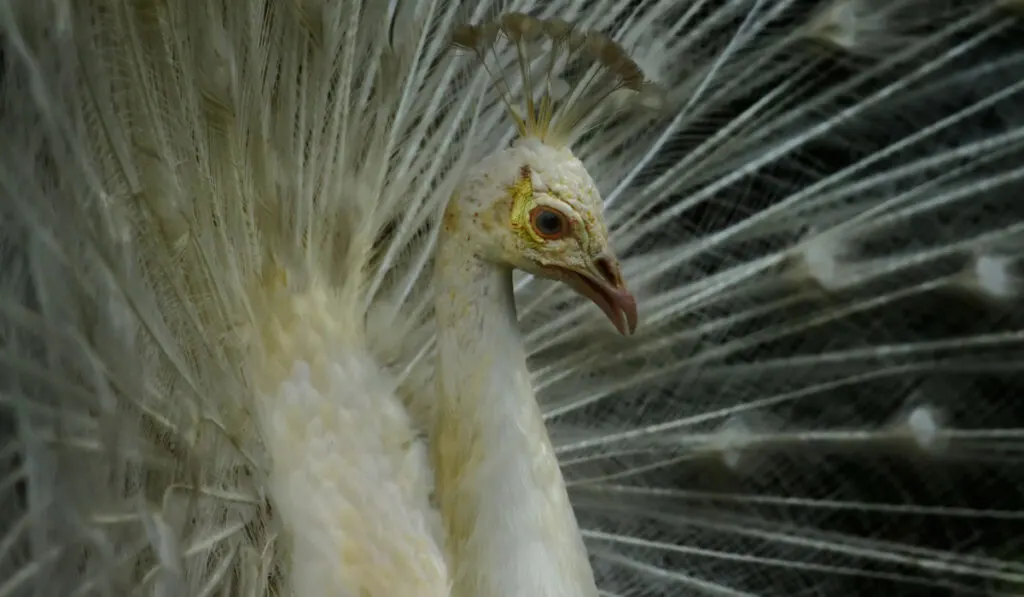
Peach Pied peahens have a primarily light peach plumage. But you will find some tan and cream colors mixed in. Of course, they have some white markings in their base plumage.
Peach Pied peacocks also have a peach-colored plumage, but their tail train and wings are lighter than the rest of the body. Their heads have a tan coloration, and they have some white splotches in various areas.
6. Purple Peafowl
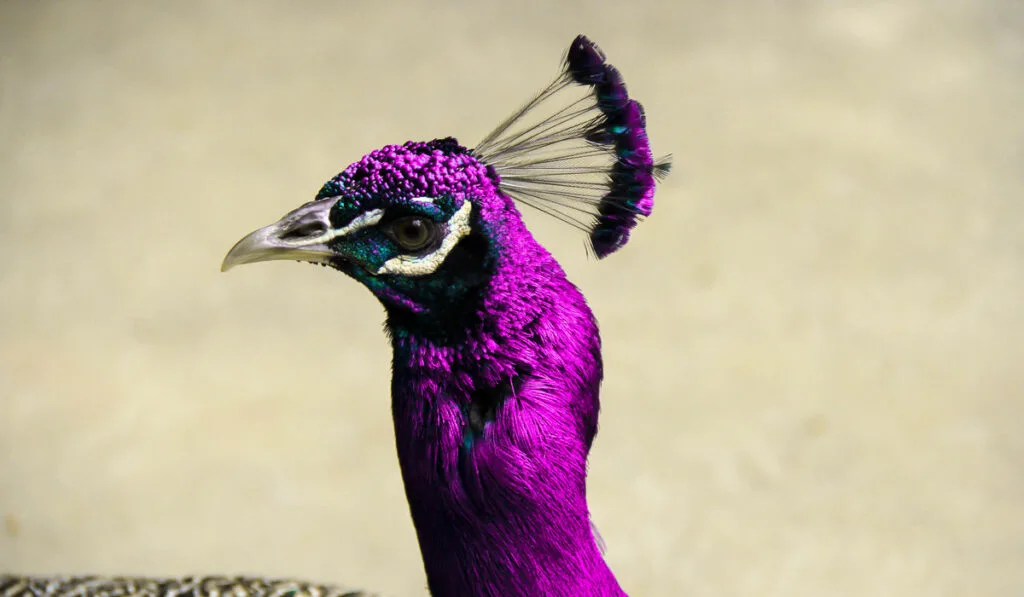
Purple peafowls are not too different from Indian peafowls. Most of their plumage is of the same color as Indian peafowls. However, they have some shiny purple coloration in specific areas.
For one, Purple peacocks have some lustrous purplish feathers around their breast and neck. But besides that, the tail train of Purple peacocks is of a darker shade than those of Indian peafowls. Their ocelli also spot some greenish and purplish colorations.
Purple peahens are creamy brown. However, they are lighter than Indian peahens and darker than Cameo peahens. They also have some purple sheen behind their neck.
7. Burford Bronze Peafowl
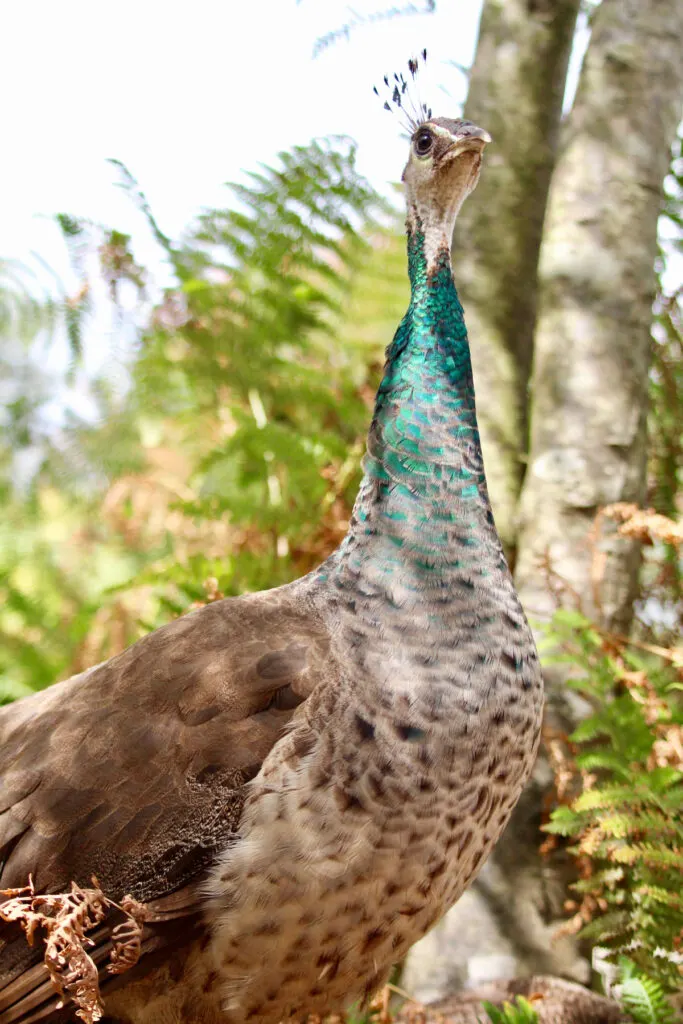
Burford Bronze peafowls were bred by Burford Abbott. They are a variation of the Indian peafowl, differing from the typical Indian peafowl in plumage color.
Burford Bronze peacocks have a shimmering, dark green neck. However, their tail train sports a lustrous, dark bronze coloration.
Burford Bronze peahens are darker than Purple peahens and Cameo peahens. However, they are not as dark as Indian peahens. Their wings are a bit darker than the rest of their plumage. But they have no shimmer.
8. White Peafowl
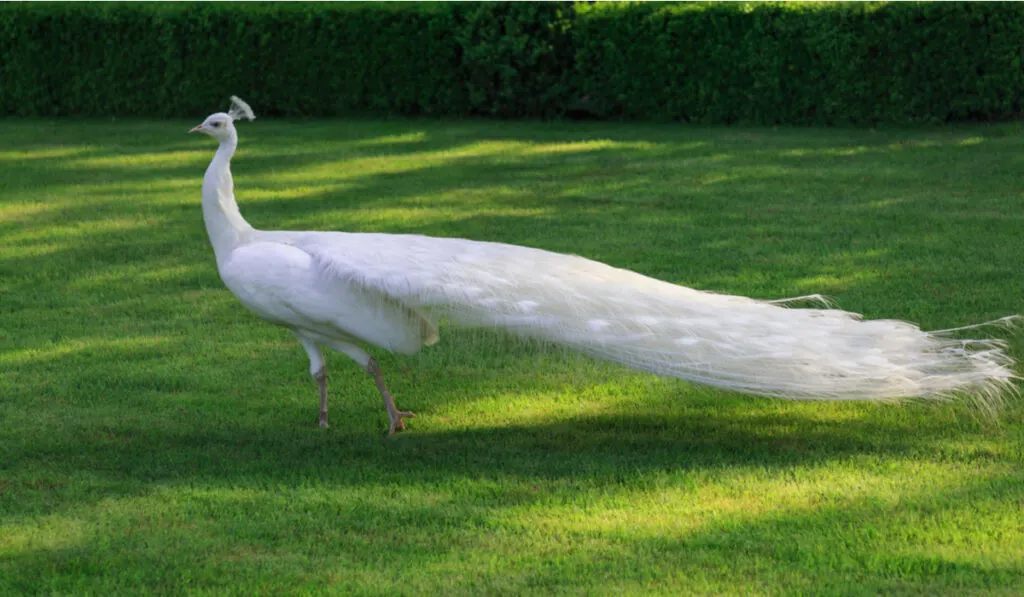
It is common for people to think the White peafowl is an albino variant of the Indian peafowl. But this is not quite so. Like some other variations we have discussed, White peafowls are a color mutation of Indian peafowls.
As their name suggests, White peafowls have white plumage. Their wings, crest, tail train, and every other part of their body are white.
While White peafowls have an all-white plumage, their eyes have regular coloring. This is why calling them albinos is inaccurate.
9. Spalding Peafowl
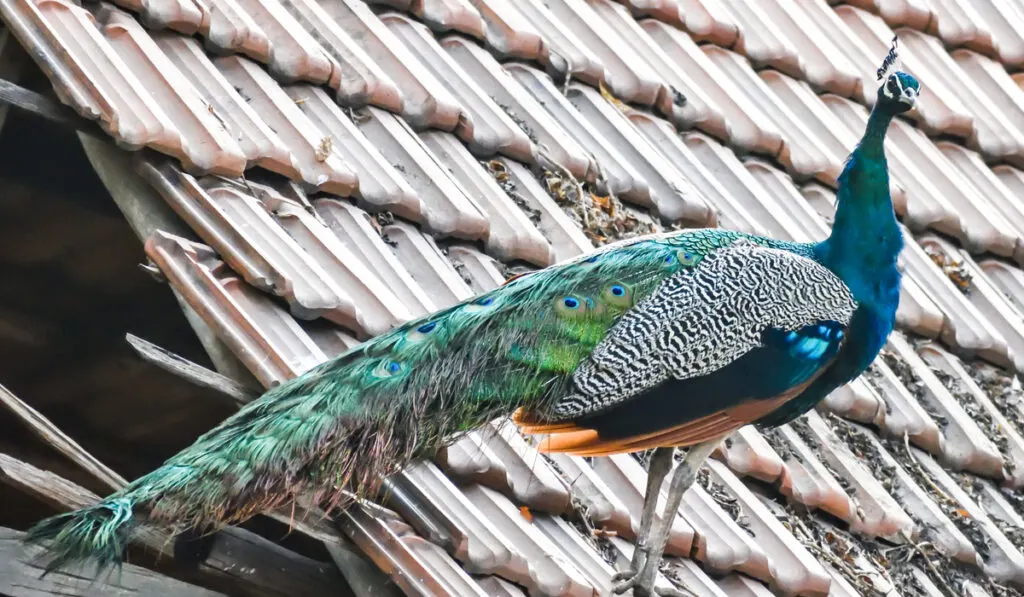
Spalding peafowls are the result of crossbreeding Green peafowls and Black Shouldered peafowls. However, their coloration is more like that of Green peafowls. Also, the Spalding peahens are closer to Green peahens in behavior.
Resources
- https://sciencing.com/tell-peacock-male-female-5948446.html
- https://petkeen.com/types-of-peacocks/
- https://naturetingz.com/types-of-peacocks/
- https://www.peacocksuk.com/rare-breeds/opal-peacocks/
- https://unitedpeafowlassociation.org/peafowl-breeds/
- https://www.peacocksuk.com/rare-breeds/cameo-peafowl/
- https://www.mcmurrayhatchery.com/blue_pied_peafowl.html
- https://www.peacocksuk.com/rare-breeds/burford-bronze-peafowl/
- https://www.peacocksuk.com/rare-breeds/purple-peacocks/
- https://www.mcmurrayhatchery.com/juvenile_peach_pied_peafowl.html
- https://www.feathersite.com/Poultry/Peafowl/BRKSpalding.html
